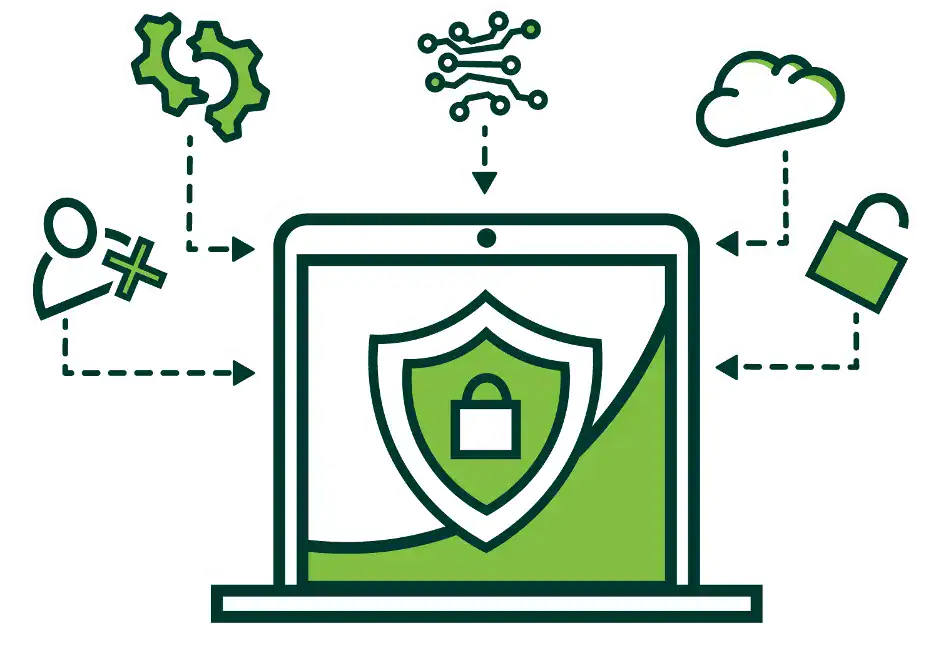5 Information Security Threats to Businesses
Khader Shakir and Derrick Helms
September 30, 2022
5 minute read

Cyberattacks – Size Doesn’t Matter, Information Does!

A cyberattack is any attempt to gain unauthorized access to individual computers, mobile devices, networks, IoT devices, or other systems to:
- Steal proprietary, personal, financial information.
- Fake, alter, delete information through the compromised system (that syncs across connected systems)
- Use compromised systems to launch follow-up attacks
- Cripple or disable systems to prevent business as usual
Attackers are less concerned about the size of the organization, more about the lack of counterbalances in place, which is common for Small to Medium-sized businesses (SMBs). Why risk it and go after a large target with strong security, when you could just infiltrate an unsecured network with little resistance? All companies irrespective of their size or industry are vulnerable given the level of sophistication and proliferation of cyberattacks.
Top 5 Information Security Threats:
- Phishing Scams
- Malware
- Ransomware
- Cloud Vulnerabilities
- Insider Threats and Data Leaks
Phishing Scams
A phishing scam is a cyberattack that steals data through email and text messages. In general, cybercriminals seek login credentials and banking information from the organizations/individuals they target.
These attacks are sometimes orchestrated to execute one piece at a time to collect bits of information that, on their own, account for nothing. However, when added together, it would be detrimental.
You may come across messages and links that appear legitimate but take you to a webpage that looks exactly like your company’s webpage, internal application, or corporate bank account. Nonetheless, the attacker controls a spoof version of the real website. Any information you enter on the site, including your email address, password, and credit card information, is immediately compromised.
Malware and Ransomware
The most common type of cyberattack is the malware attack — malicious software used to steal personal, financial, or business information from the victim’s computer. Several types of malicious software exist, including ransomware, spyware, and command and control software.
It is especially detrimental to small businesses because these attacks can cripple devices and require expensive repairs or replacements. As a result, attackers can gain access to sensitive data, posing a threat to customers and employees.
Ransomware takes it a step further by encrypting sensitive files and locking employees out. Hackers encrypt data, hold organizations to ransom, and then sell decryption keys for large sums of money. Small businesses are particularly vulnerable to these types of attacks. According to reports, 71% of ransomware attacks target small businesses; the average ransom demand is $116,000. Many SMBs were forced to close their doors for good after suffering ransomware attacks. The patience with which ransomware attacks are executed is what makes them unique. Hackers encrypt sensitive information behind the scenes for weeks and sometimes months once they have gained access to a system.
Cloud Vulnerabilities
While cloud adoption amongst SMBs has gained tremendous traction, it has introduced those organizations to a new set of information security threats.
- Misconfiguration of cloud security settings during the transition from on-prem to cloud can leave open cracks that are easily leveraged by malicious actors to gain access to data that is housed on the cloud.
- Compromised authorized user credentials either intentionally or due to a previously executed malware or phishing attack leaves your organization’s cloud network wide open for exploitation.
- APIs are used extensively to connect with disparate systems, transfer and transform data to execute millions of system transactions, yet Insecure APIs are one of biggest contributors to information security risk. Broken object level, inappropriate user level and function level authorization, over exposure of data, security misconfiguration, and insufficient logging and monitoring are commonly exploited.
Insider Threats and Data Leaks
Organizations go through several rounds of interviews and employ background checks to onboard employees who are trusted to perform their duties. However, there is no way to screen if any of these employees will eventually act as the same malicious actor that you need to guard against.
An insider threat happens when a company’s employee or a group of them and their accomplices (inside & outside) misuse their authorized access, launch a coordinated attack, and hide their tracks to avoid detection. They usually install unauthorized software that is infected with malware, try to phish credentials of unsuspecting colleagues, open backdoors to the network, or disable anti-virus, firewalls, etc. These changes to their environment can indicate a potential threat and detect anomalies that could be warning signs for data theft.
The consequences of such incidents can be devastating. Massive financial losses, legal proceedings, reputation loss, and operational downtime may result. SMBs are likely to suffer irreparable damage from an incident like this.
Takeaways
Cybersecurity threats are constantly evolving, making it difficult to stay up-to-date and protect your network. Even the most well-defended cybersecurity system cannot guarantee 100% protection against attacks because millions of hackers develop new attacks faster than companies can update their defenses.
The key is being proactive instead of waiting for someone to infiltrate your network. Hardening your environment with a
layered defense strategy to cybersecurity threats reduces the ease with which cybercriminals exploit your data. Below are the starting blocks for any organization as a best security practice:
- 24 x 7 Monitoring and Detection Services that includes immediate isolation
- DNS Security and Filtering for known bad actors
- Muli-Factor on all Accounts and Remote Access Points
- Patch Management for all Equipment with verification Vulnerability Scanning
- End User Security Awareness Training
- Full Data Backup Capabilities
There is no “silver bullet” strategy that can guarantee full protection, but you can become a less attractive target when you have a layered strategy.
To avoid financially crippling your organization in the event of a successful attack, you should supplement your cybersecurity strategy with adequate insurance as well. Using comprehensive layered cybersecurity defenses and cyber insurance will ensure you have set your company up for the best possible outcome when bad actors target your organization.














